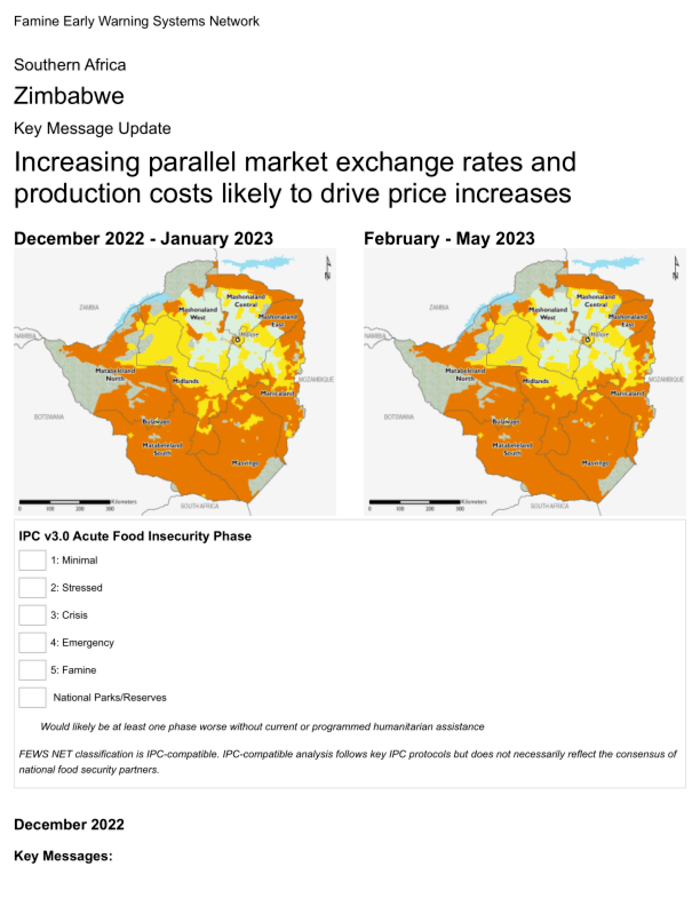
Crisis (IPC Phase 3) outcomes are expected to intensify through the peak lean season in early 2023 in typical deficit-producing areas in the south, east, west, and far north as market reliance on staple cereal increases. Stressed (IPC Phase 2) outcomes are expected to prevail in the communal areas of the surplus-producing northern districts and urban areas. The more productive resettlement areas of these districts are expected to maintain Minimal (IPC Phase 1) outcomes throughout the lean season. With the start of harvests in April/May, household food access will improve, driving mostly Stressed (IPC Phase 2) and Minimal (IPC Phase 1) outcomes.
Following relative macroeconomic stability over the last few months, prices are likely to continue increasing into early 2023, further reducing the market access of poor households to basic food and other commodities. Parallel market exchange rates increased by nearly 15 percent in December from November, trading between 850-950 ZWL per USD, likely due to increasing demand for the ZWL and increased foreign currency inflows as the festive season begins. Additionally, widespread and prolonged national power cuts are negatively impacting most sectors of the economy, increasing the cost of production and reducing engagement in income-generating activities, thereby limiting household purchasing power and income.
Across the country, poorer households are increasingly engaging in agricultural and off-farm labor activities with the start of the agricultural season. However, labor rates remain below normal, especially in deficit-producing areas and other communal farming areas, due to limited liquidity by better-off households to pay in cash or in-kind. Poorer households are increasing their reliance on bartering for food, selling household assets and livestock, migrating for labor, relying on social networks for support, and petty trade to earn income for food purchases to cope with below-average wage rates and income.
Widespread rains persisted in December, and planting has continued throughout the country. With a government target of 1.94 million hectares of maize for the 2022/23 season, the Ministry of Agriculture reported that by mid-December, about 466,000 hectares of maize had been planted, around double the area planted by the same time last year. The government also reported that all major crops have significantly higher cropped areas relative to the same time last year. However, poor access to crop inputs on the market continues to negatively impact some farmers’ production potential and crop quality. Additionally, the rains have improved water and pasture conditions across much of the country, and further improvements are expected in line with the forecasts for normal to above-normal rainfall this season.
Post published in: Featured

